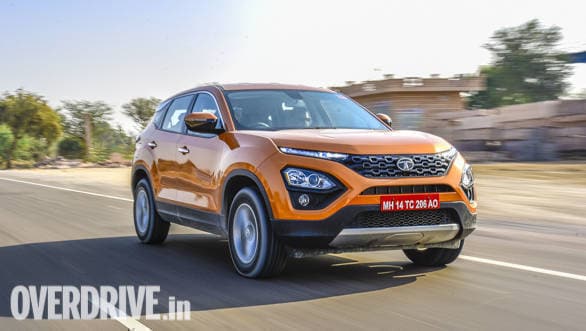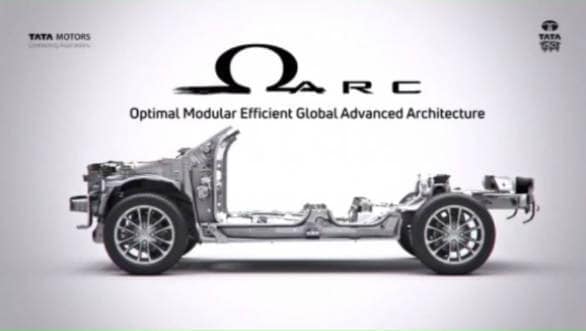Overview: Tata Harrier's OMEGA architecture
The Tata Harrier created waves last week after first production-ready prototypes were given out to the motoring media to gather their impressions. If you haven't read or watched ours already, do so now! Two words that you may have come across often while getting your dose about the Harrier are 'Land Rover'. So what exactly is the connection here apart from the common parent that the Harrier and Land Rover share? Well, answering that with the word 'DNA' would be far stretched, but 'underpinnings' is more like it.

To reach that answer, let's back up a bit. Before Tata invested in Land Rover, the British marquee was under the ownership of the Ford Motor Company. By 2006, Ford had developed a new platform for D-segment or mid-size cars that would cater to the European market. The platform was called the EUCD and it would go on to underpin various European cars under Ford's umbrella. In fact, the third-generation Mondeo - which sadly never came to India after its predecessor's dismal performance - was one of the first Ford models to adopt the EUCD. Volvo adapted the platform for their S80 and XC60 and modified it to use five-cylinder engines and called it the P3. Similarly, Land Rover adapted and significantly modified the EUCD for better off-roading skills and called it the D8. The D8 was then used in the Free Lander 2 and evolved further to underpin the Evoque, the Jaguar E-Pace, and the Discovery Sport. Strategically, Tata brought the D8 to India and localised it heavily to not only shave production costs on the aforementioned J-LR vehicles, but to also create the bed for its own premium range of cars - the first of which is the Harrier.

Tata calls their version of the D8, the OMEGA-Arc, which is an acronym for Optimal Modular Efficient Global Advanced Architecture. Despite the age of the donor platform and the localisation and sharing across so many models, it is still an expensive platform considering the relatively low staring price that the Harrier targets (~₹13l). Therefore Tata had to further modify this platform to reduce costs. Like Land Rover, Tata's iteration too makes use of steel (and not aluminium like the larger Land Rovers), however the material mix is likely to be different. Tata's in-house expertise in steel technology and supply only helps that move further.
Compared to the Land Rover, the Harrier also uses different suspension componentry. While the mounting points for various suspension components is nearly identical, the Harrier chucks the more expensive multi-link setup (rear) from Land Rover, for a torsion-beam derivative that they like to call a twist-blade configuration. At the front the configuration is very similar to Land Rover's (albeit with a different mix of materials) with McPherson struts, a steel lower arm and an anti-roll bar.
Tata also uses a modified sub-frame at the front to accommodate a Fiat sourced Multijet-II engine and gearbox that Tata has retuned and christened as the Kryotec. Tata claims to have paid careful attention at the crumple zones in this area. The different subframe also necessities a new sound insulation firewall compared to the Land Rover configuration.
The OMEGA-Arc also benefits from the D8's future proofing. The platform is not only ready for an all-wheel-drivetrain, but can also be configured with a battery pack in the floor bed for an electrified powertrain. So we won't rule out the possibility of a Harrier HEV/EV, at least is in a working concept form. Tata also says that an AWD and electrified variant is possible even with the Fiat-sourced powertrain.
src="https://www.youtube.com/embed/OBnlRLhbDjY" width="560" height="315" frameborder="0" allowfullscreen="allowfullscreen">
The Land Rover underpinnings have also allowed Tata's designers to craft a handsome looking car with the perfect visual proportions of a butch SUV. The modular nature of the platform will reap further benefits for Tata in the years to come. Following up with the launch of the Harrier in early 2019, will be the seven variant code named the Q502 (or H7X in internet-speak). Come 2020 and Tata will showcase a premium sedan based on the OMEGA-Arc. This form factor has been a long term dream for Tata Motors as hinted by its concepts cars - from the Prima in 2009 to the EVision in 2018. The latter is what will take production shape and realising that dream will most likely be the OMEGA-Arc, or at least another derivative of this able platform.